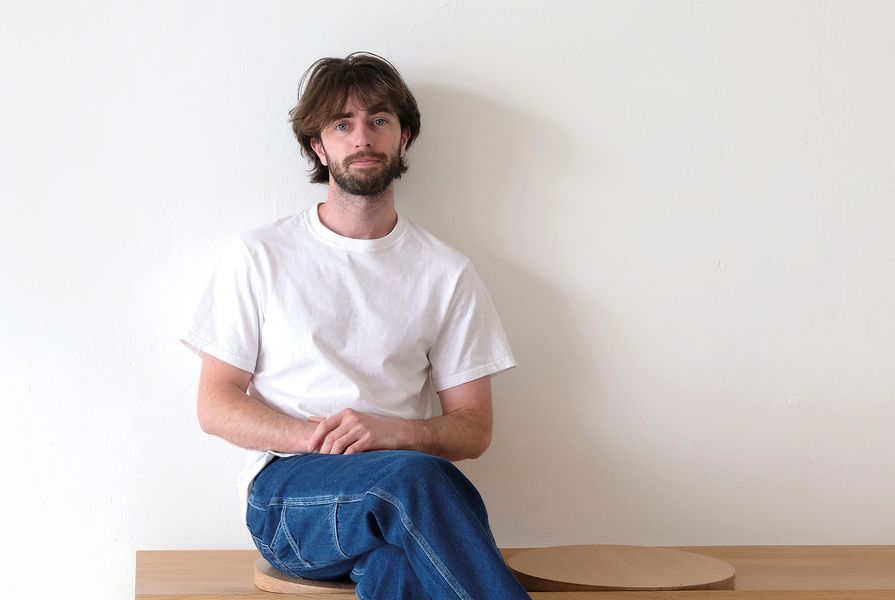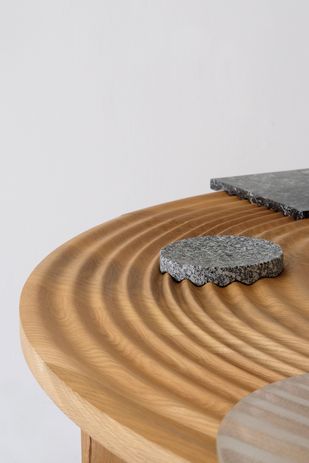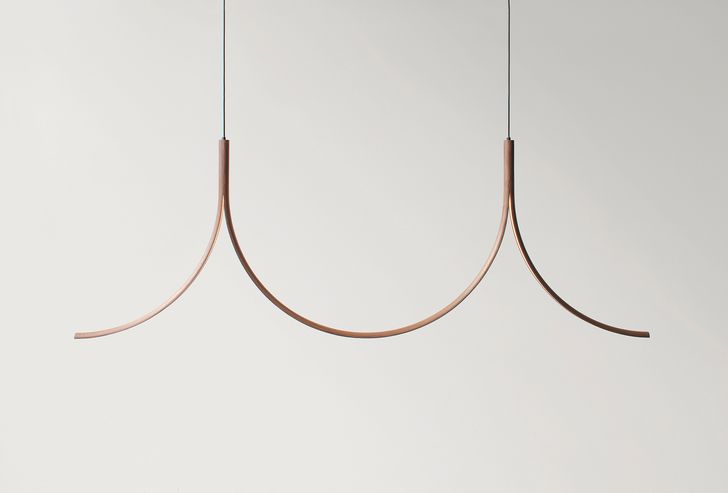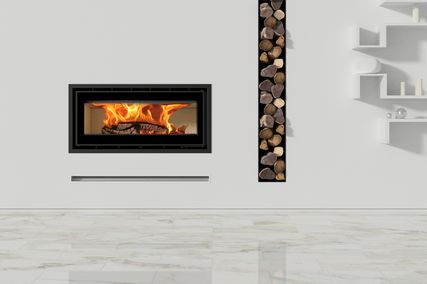Three years young, Sabu Studio is an emerging furniture and lighting design practice with an honest and intimate relationship to materials and processes. Located in Melbourne’s Coburg North, Sabu designer and maker Samuel Burns has always been “drawn to transposing ideas from the natural world into objects and interior spaces.” Burns’ pieces represent a delicate balance between craftsmanship, respect for materials and humble dedication to process. Many of his pieces – be they benches, chairs, stools or lamps – have tactile appeal, with several designs incorporating moving elements to promote user agency.
One such piece is Burns’ multifunctional Honours project, the Outside In table, which embodies ideas that he went on to explore in subsequent Sabu Studio work. Burns studied natural references such as rivers and rocks to create the experimental, modular piece, hoping “to introduce a new design typology and challenge the way we interact with our surroundings, as well as ourselves.” Made up of multiple moving parts, Outside In encourages interactions – both practical and theatrical – between users and objects. Multiple tables can be grouped to form a circle or arranged to resemble a flowing river; smaller, skilfully crafted moving woodwork elements invite further play and curiosity, providing very satisfactory “aah” moments when the pieces fit “just right.”
Moving woodwork elements in the Outside In table (2018) invite curiosity and encourage play
Image: Samuel Burns
The equally satisfying Arc bench emerged as a progression of Outside In through a simple nesting of forms. “Benches are often quite mundane and strictly utilitarian objects,” Burns says, but Arc prompts a “sense of dynamism through the shifting forms … I just like how things slot and connect into each other.”
Later evolving into the Onu pendant, the Onu floor light is one of Burns’ many custom pieces to earn its way into Sabu Studio’s permanent collection. Individually delicate and sculptural Onu resembles a grove of trees when viewed en masse: a forest with light gently filtering through. While the lights appear quite fine, they are designed to be robust and strong. “I didn’t want to have any visible fixings, so I designed these so the LEDs can be easily replaced,” Burns explains as he snaps apart two seamlessly bound pieces of timber that had appeared to be one.
The Ono Duo pendant (2022) is delicate and sculptural, yet designed for robustness.
Image: Samuel Burns
Describing himself as a “relatively self-taught” woodworker, Burns has a refreshingly honest approach to timber. “I don’t necessarily want to see myself as a woodworker,” he says. “It has connotations that might give people who meet with me a certain idea about what I make. I’m trying instead to approach it in a contemporary way.”
While currently incorporating brass into the ceiling-mount mechanisms of his lights, Burns notes that one day, he would like brass to be a prominent material in his pieces. Looking to the metal chair frames hanging on his studio walls, Burns shares that recently, he’s been testing his welding skills. To demonstrate them, he pulls out prototypes of his Twenty chair and table from a corner of his studio. It quickly emerges that metal is not the only material he hopes to add to his repertoire: he imagines some of the more solid pieces “may translate quite well to stone.”
It appears to be an exciting time for this young designer, who is deeply engaged with new materials and processes. Yet Burns remains refreshingly honest when reflecting on the future of Sabu Studio and his desire to expand the direction of his humble and sincere practice: “I don’t want to pigeonhole myself and quite like the idea of having a diverse material range and diverse set of skills … I like the idea of having everything made in-house and locally made,” he says. “I think people appreciate that, especially in this day and time. And I like being able to say I made it, and that I had a part in the process.”
Source
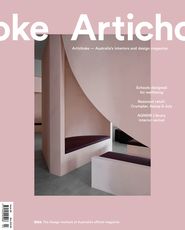
People
Published online: 25 Oct 2023
Words:
Nikita Bhopti
Images:
Angela Crowley,
Pier Carthew,
Samuel Burns
Issue
Artichoke, September 2023

